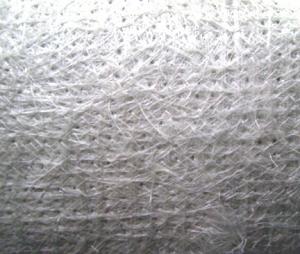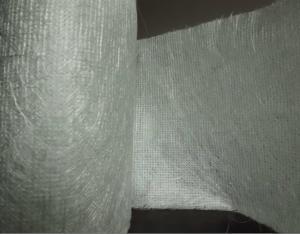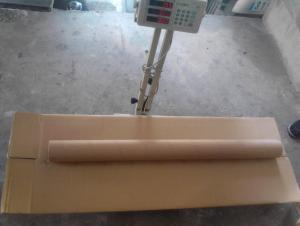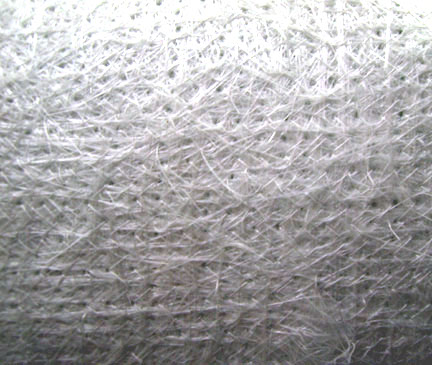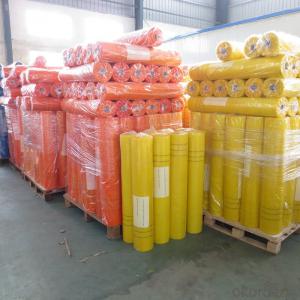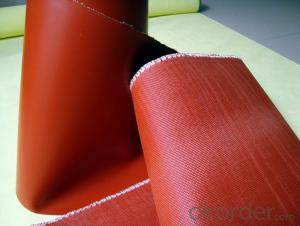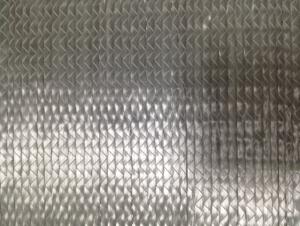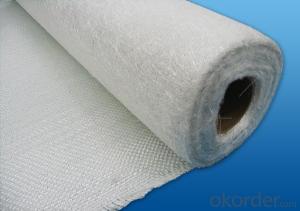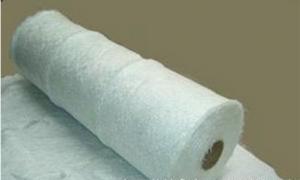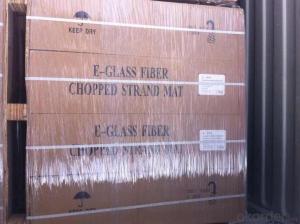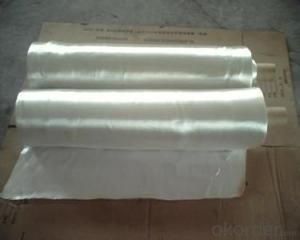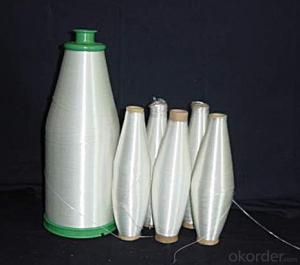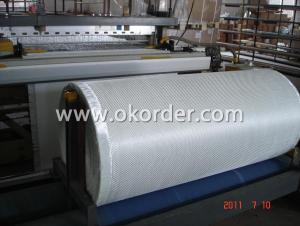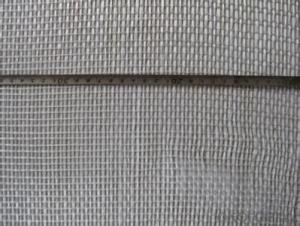e-Glass Stitch Combo Mat - EMK Fiberglass Fabrics
- Loading Port:
- China Main Port
- Payment Terms:
- TT or LC
- Min Order Qty:
- 1000 kg
- Supply Capability:
- -
OKorder Service Pledge
OKorder Financial Service
You Might Also Like
DESCRIPTION
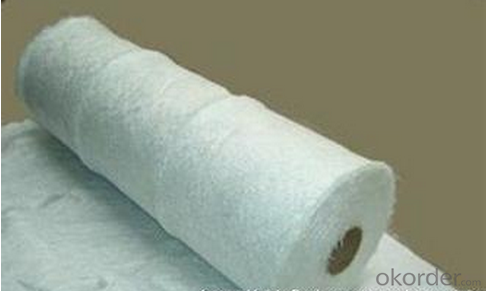
E-glass stitched combo mat consists of two or more layers of fiber glass rovings which arestitch-bonded. one layer of rovings and differene layers of rovings can beoriented differently and have different linear density. the rovingspecification, number of roving layers, mat width and roll diameter can becustomized as per requirement.
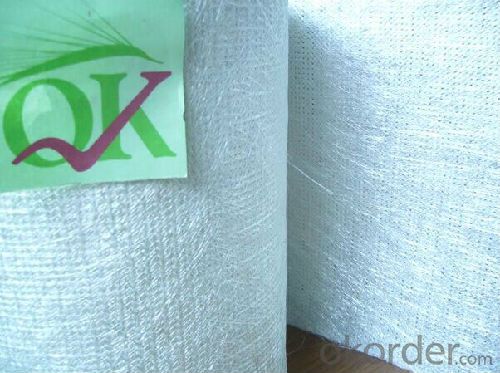
SPECIFICATIONS
| Product No | Overall Density | Woven Roving Density | Chop Density | Polyester Yarn Density |
| BH-ESM1808 | 896.14 | 612 | 274.64 | 9.5 |
| BH-ESM1810 | 926.65 | 612 | 305.15 | 9.5 |
| BH-ESM1815 | 1080.44 | 612 | 457.73 | 10.71 |
| BH-ESM2408 | 1132.35 | 847 | 274.64 | 10.71 |
| BH-ESM2410 | 1162.86 | 847 | 305.15 | 10.71 |
| BH-ESM2415 | 1315.44 | 847 | 457.73 | 10.71 |
APPLICATION:
Emulsion Chopped Strand Mat is mainly applied to unsaturated polyester ,viny ester and epoxyresins. The product is most widely used in hand lay-up process and also can be used in filament winding. compression molding and continuous laminating processes. The typical end products including various panels, boats,bath equipment automotive parts and cooling towers
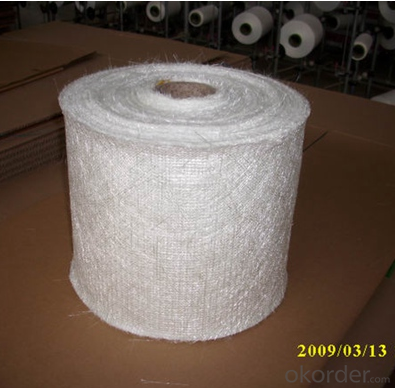
PACKAGE:
fiberglassstitched mat is wound onto paper tube and then wrapped up with plasticfilm, which can be packed in a cardboad box or kraft paper.the rolls are to behorizontallyplaced. rolls can be loaded into container diretly or on pallets.
FAQ:
1.What is the delivery time ?
15days after receiving the deposit
2.Are you a trading company or factory.
We are factory,and we have more than 10 years of experience.
- Q: How does fiberglass fabric perform in shear strength?
- Fiberglass fabric typically exhibits good shear strength due to the strong and interwoven nature of its glass fibers. It can withstand moderate to high shear forces, making it suitable for various applications where shear resistance is required, such as in composite materials, construction, and aerospace industries.
- Q: Are there any specific certifications or standards for fiberglass fabrics?
- Fiberglass fabrics have specific certifications and standards. The ISO 9001:2015 certification is a widely recognized one, indicating that the manufacturer adheres to international product quality standards and implements a quality management system. Other organizations, like ASTM International, have developed standards for fiberglass fabrics. For instance, ASTM D579-67(2013) specifies requirements for glass fiber fabrics, while ASTM D3774-16a covers woven fabric testing methods and performance requirements. Moreover, there are industry-specific certifications available. Manufacturers can pursue certifications like the NORSOK M-710 for offshore applications or the MIL-STD-810 for military-grade fabrics. These certifications and standards ensure that fiberglass fabrics meet specific criteria for quality, safety, and performance. They instill confidence in customers regarding the reliability of the product and allow manufacturers to showcase their commitment to producing high-quality fiberglass fabrics.
- Q: Can fiberglass fabric be used for roofing?
- Certainly! Roofing applications can indeed utilize fiberglass fabric due to its lightweight and durable nature. This material, widely used in the construction industry, is renowned for its robustness and resistance to corrosion, making it an appropriate choice. By reinforcing roofing systems, fiberglass fabric enhances their strength and stability. It is commonly combined with other materials like asphalt or rubber to create a more resilient and enduring roof. Furthermore, the fire-resistant property of fiberglass fabric ensures an added layer of safety for the roofing system. In summary, fiberglass fabric proves to be a trustworthy and cost-effective alternative for roofing projects.
- Q: What is the "three proof cloth"? How to correctly use the three proof cloth?
- Three proof cloth is PVC coated glass fiber cloth.
- Q: How is fiberglass fabric used in the production of fire-resistant curtains?
- Fiberglass fabric plays a crucial role in the production of fire-resistant curtains due to its unique properties and capabilities. Fire-resistant curtains are designed to prevent the spread of fire and minimize its impact in case of a fire emergency. Fiberglass fabric is woven from fine glass fibers, which are known for their high resistance to heat and flames. This makes it an excellent choice for fire-resistant curtains as it acts as a barrier between the flames and the surrounding areas. In the production process, fiberglass fabric is typically treated with special fire-retardant chemicals or coatings to enhance its fire-resistant properties. These treatments can further increase the fabric's ability to withstand high temperatures, prevent flames from spreading, and minimize smoke production, thus providing a more effective fire barrier. The fiberglass fabric used in fire-resistant curtains is also lightweight and flexible, making it easy to handle and install. This allows for seamless integration into various settings such as homes, offices, theaters, or industrial facilities. Furthermore, fiberglass fabric is durable and long-lasting, ensuring that the fire-resistant curtains remain effective for an extended period. It can withstand regular wear and tear, exposure to sunlight, and the effects of moisture without compromising its fire-resistant properties. Overall, fiberglass fabric is a critical component in the production of fire-resistant curtains due to its exceptional fire-resistant capabilities, flexibility, durability, and ease of installation. By using fiberglass fabric, these curtains provide a reliable and efficient solution to protect lives and property in the event of a fire.
- Q: How does fiberglass fabric handle saltwater exposure?
- The resistance of fiberglass fabric to saltwater exposure is widely recognized. This is because the fabric is made up of glass fibers, which makes it highly resistant to the corrosive effects of saltwater. Unlike materials like steel or aluminum, fiberglass does not rust or corrode when it comes into contact with saltwater. Saltwater contains high levels of sodium chloride, which can be extremely harmful to many materials. However, fiberglass fabric remains unaffected by this corrosive element. This is because the glass fibers used in fiberglass are chemically inert and do not react with the salt in saltwater. As a result, the fabric maintains its structural integrity, strength, and durability even after prolonged exposure to saltwater. Furthermore, fiberglass fabric also has resistance to other elements commonly found in saltwater, such as seaweed, algae, and marine organisms. These elements often attach themselves to surfaces, causing damage or reducing performance. However, the smooth and non-porous surface of fiberglass fabric makes it challenging for these organisms to adhere. This reduces the need for maintenance and extends the lifespan of the fabric. In conclusion, fiberglass fabric is an excellent option for saltwater exposure due to its ability to resist corrosion and damage from saltwater, as well as its capacity to repel marine organisms. Whether it is used in marine applications like boat hulls, docks, or coastal structures, fiberglass fabric provides a durable and dependable solution for saltwater environments.
- Q: What's the difference between wall fabric and fiberglass fabric? Which is better for brushing before latex paint? Why?
- Glass fiber cloth is made of plastic and other chemical fibers, suction wall performance is poor, more smooth, less pores, easy to fall,
- Q: What is the abrasion resistance of fiberglass fabric?
- Fiberglass fabric possesses a high level of abrasion resistance, making it well-known for its capacity to endure repeated friction and wear without incurring substantial damage. Its sturdy and long-lasting nature renders it suitable for applications that require crucial abrasion resistance, including the production of protective clothing, industrial curtains, and reinforcing materials for composites. The actual level of abrasion resistance in fiberglass fabric may vary depending on its construction, finish, and any additional coatings or treatments applied. Nonetheless, fiberglass fabric is universally acknowledged for its superb resistance to abrasion, resulting in its widespread use in industries that prioritize durability.
- Q: How is fiberglass fabric used in the production of insulation boards?
- Fiberglass fabric is widely used in the production of insulation boards due to its excellent thermal resistance, durability, and fire-retardant properties. It is typically used as a reinforcement material in the manufacturing process. During production, fiberglass fabric is combined with a binder, such as resin or adhesive, and compressed to form insulation boards. The fabric acts as a reinforcing layer, providing strength and stability to the boards. It helps prevent the insulation material from shifting or settling, ensuring long-term performance and insulation effectiveness. The fiberglass fabric also enhances the insulation properties of the boards. Its high thermal resistance helps minimize heat transfer, keeping buildings warmer in winter and cooler in summer. This contributes to energy efficiency and reduced heating or cooling costs. Furthermore, fiberglass fabric is known for its fire-retardant characteristics. By incorporating it into insulation boards, the fabric adds an extra layer of protection against fire hazards. In the event of a fire, the fiberglass fabric acts as a barrier, preventing the spread of flames and reducing the risk of fire-related damage. Overall, fiberglass fabric plays a crucial role in the production of insulation boards, providing structural reinforcement, thermal insulation, and fire-resistance. Its versatility and superior performance make it an ideal choice for various applications where insulation is required, including residential, commercial, and industrial buildings.
- Q: Can fiberglass fabric be used for insulation in tanks and vessels?
- Yes, fiberglass fabric can be used for insulation in tanks and vessels.
Send your message to us
e-Glass Stitch Combo Mat - EMK Fiberglass Fabrics
- Loading Port:
- China Main Port
- Payment Terms:
- TT or LC
- Min Order Qty:
- 1000 kg
- Supply Capability:
- -
OKorder Service Pledge
OKorder Financial Service
Similar products
Hot products
Hot Searches
Related keywords
